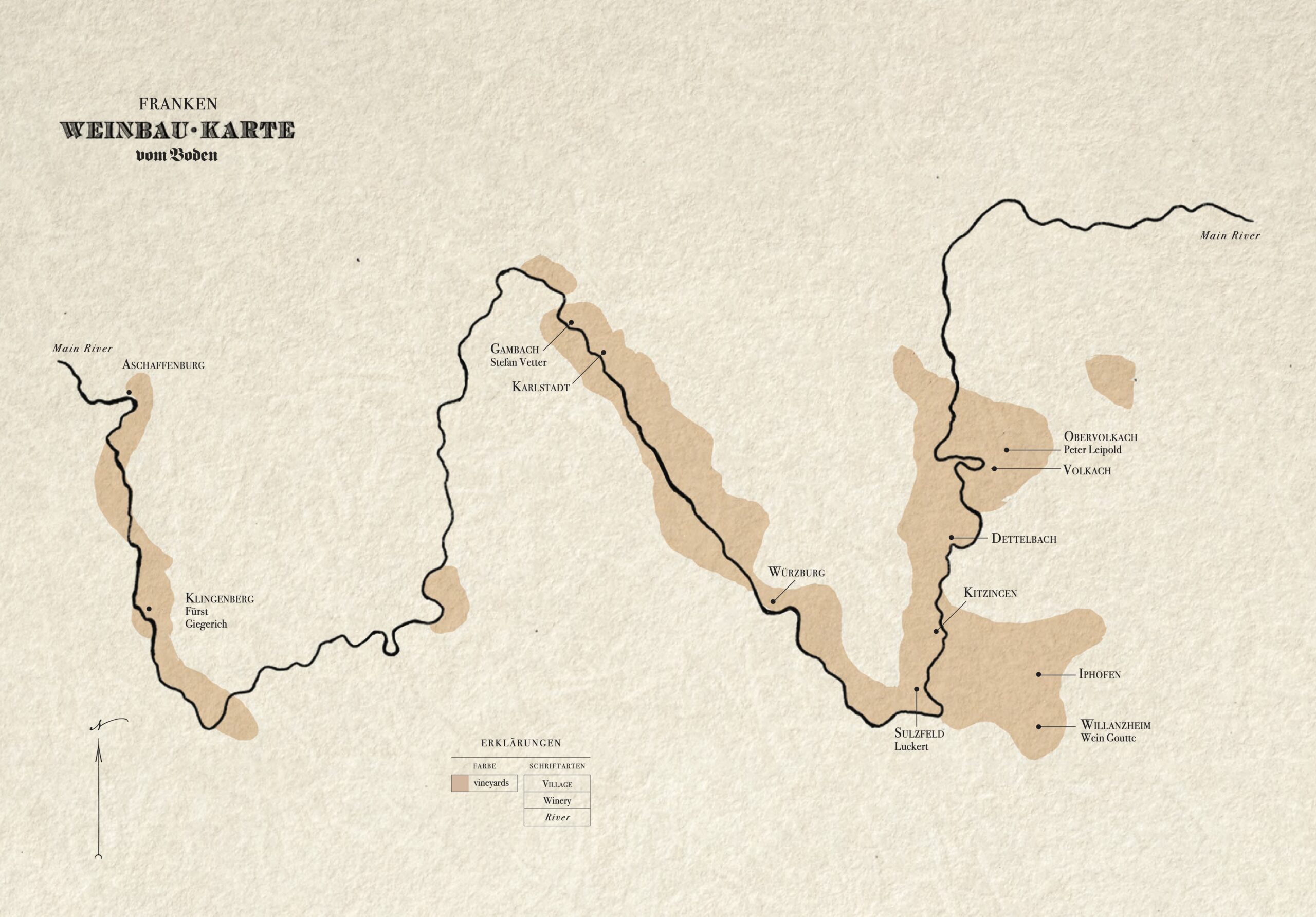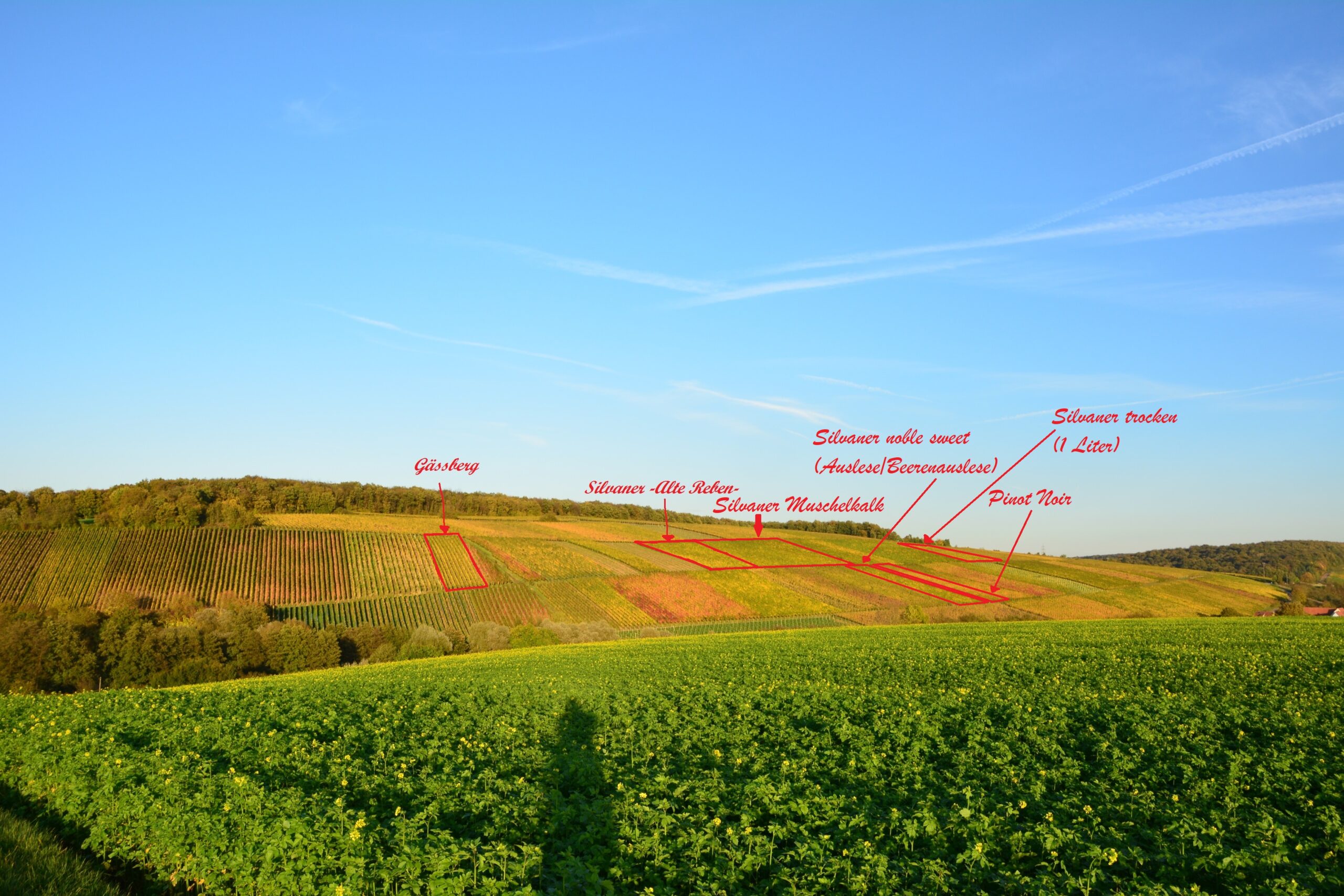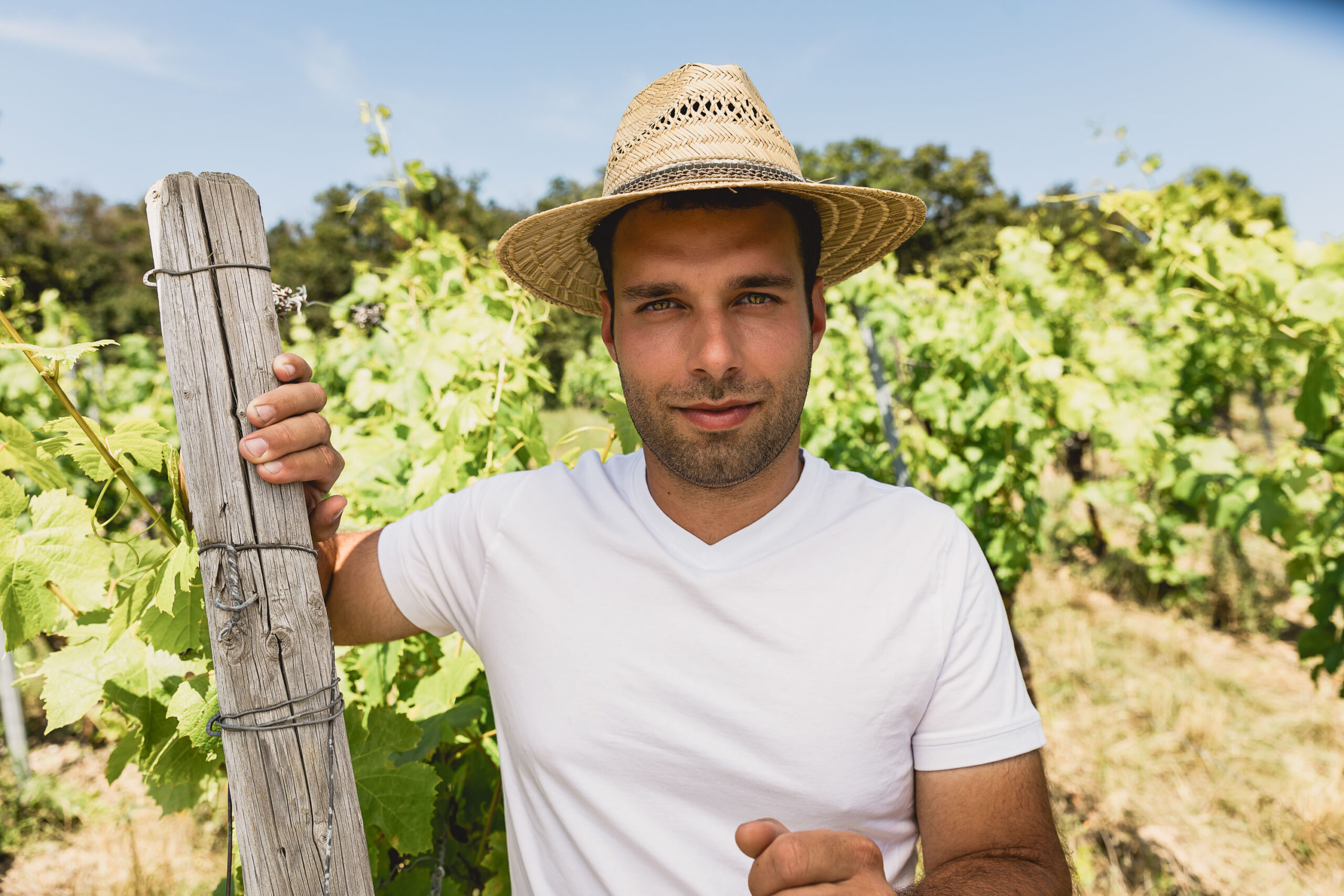The full quote is probably worth including, because it’s so deeply heartfelt.
I read it and the emotion feels nearly palpable: “For me, Peter Leipold is on the way to becoming a young genius… He worked for two years here at our winery before leaving for Liger-Belair. He has a special feeling for wine, something you don’t learn at school. His Silvaners are great, soil-driven wines that evaporate in the glass… What Peter does with Pinot and Silvaner in Franconia reminds me of what Julian Haart is doing in the Mosel… Peter’s wines touch my heart.”
I have had a similar emotional reaction to Peter’s wines, though for me the word that best summarizes the experience is this: joy.
I’ve written a rather long profile of Peter, which you can find here – including all sorts of information about Franconia, etc. I strongly encourage you to read this and ignore the news, at least for an hour. It will bring you some comfort.

(Above: Franconia, shaped largely by the Main river that forms something of a “W”. You can find the Leipold estate in the far eastern part in the village of Obervolkach.)
Franken is one of the least-understood regions in Germany, and I think there are two main reasons why.
First, Riesling is not king here. In fact, of the roughly 6,000 hectares planted in Franken, there are only around 350 hectares of Riesling. Silvaner is, without question, the defining grape of Franconia. In its greatest form, Silvaner is profoundly sensitive to soil and the top wines feel to me what great Chablis perhaps tasted like in the 1980s, which is to say nervy, incisive, with structure and a saturating, chalky acidity. (Or so I imagine, not having tasted 1980s Chablis at least on release.) Franken Silvaner can be a profound experience; please go try one.
Spätburgunder – Pinot Noir – is perhaps the second-most-important grape here, at least in terms of the region’s reputation. (While Peter Leipold makes really good Pinot Noirs, Rudolf Fürst, in western Franconia, nearer Frankfurt, is one of the iconic German estates that has consistently made great Pinot Noir for over two decades, cementing Franconia’s prowess and potential for Spätburgunder.)
The other reason that few people in the U.S. know much about Franken wines is that the wines were not only dry, they were (and are) fränkisch trocken – a dryness that would have registered almost brutally dry ten or twenty years ago, and still today can be a bit sharp: that splash of ice-cold water to the face.
So, curiously, while the historic style of the region speaks exactly to what we say we want today, for most of the post-war period, what we cared about in German wine was mostly just off-dry Riesling… and so Franconia was largely ignored.
TIME TO STOP IGNORING THIS PLACE.
Time to embrace your inner Bocksbeutel my friends.
And so it has been profoundly refreshing that, despite the fact that Leipold’s wines are mostly made from grapes that no one seems to know much about (Silvaner and Scheurebe), from a region no one really seems to know much about (Franconia), and come (at least in some cases, noted below) in funny-shaped bottles called Bocksbeutels that are mostly impossible to display or store, and have labels that are decidedly unhip…
…yet despite all these rather significant liabilities, people really care about the wines of Peter Leipold.
It feels almost old fashioned to write a line like this, but people seem to taste the wines, smile, and then order more.
Getting a bit more specific, for me these are easily amongst the greatest wines of Franconia I’ve ever tasted – and I have tasted many.
More than that they are among my personal absolute favorite wines from Franken. What does this mean?
I find them among the most transparent and lithe, light. Franken wines, if often beautifully structured and dry, can be a bit too fleshy, too dense. Many of the more famous estates in Franken seem to want to polish the sharper edges of the white wines, making them a bit more luxurious, more textural, and, at least to my palate, a bit less exciting.
Peter’s wines are ruthlessly clear, crystalline. “Saturate” and “evaporate” are words I use a lot with them; they feel incisive, the razor’s edge, yet silken. I think he just has a supernatural touch, that “feel” thing that Keller talks about. You have to just taste these wines.
And the truth is the brilliant honesty of the wines starts at the very beginning: The Silvaner Kabinett Trocken liter is as light and refreshing a wine as possible, at least outside of the Mosel. The limestone-dominant Grand Cru Silvaner “Gässberg” and sandstone-dominant Silvaner “Schilfsandstein” are masterpieces of terroir, the soils being not subtle details about the wines but essential truths that you taste.
Peter’s 2023ers are superb.
They have the vibrant, exuberant fruit, yet here the wines are neither too full, nor too fruity or heavy. They feel energized, electric, crystalline – there is a riveting focus to the wines.
Below we present the spring releases; these wines have just arrived. Notes on all the bottlings below and email us orders@vomboden.com with any questions.

(Above: The various parcels of Leipold’s limestone vineyards in the eastern part of Franconia.)
2023 Leipold Silvaner Kabinett Trocken 1.0L ~$23 estimated retail
This is basically everything I love about Peter’s wines – AND it’s a Kabinett Trocken AND in liter format. I swoon.
The bottling is light and fresh, beautiful herbal notes, rainwater citrus, a bevvy of garden greens and a lovely percolating acidity. Just absolutely transparent wine that feels like it bubbled up from a spring.
2023 Leipold Silvaner “Keuper” ~$30 estimated retail
Leipold’s “Keuper” bottling (Keuper translates to marl) is in a way the fruitiest, most floral and easiest-going Silvaner that Peter makes. This is not to say it’s easy or simple; it is not. It still has that brilliant clarity, the quinine-inflected, shimmering acidity that defines most of Leipold’s wines.
2023 Leipold Silvaner “Muschelkalk” (Warning: Bocksbeutel) ~$30 estimated retail
Sourced from a limestone parcel just some meters down from the “Grand Cru” Gässberg, Leipold’s “Muschelkalk” bottling (this is bottled in a Bocksbeutel) is a very serious wine. Very taut and linear on the palate, with white citrus and saline notes, here we get into that Silvaner-as-more-Chablisienne-than-Chablis thing. Yet there is a slimness to the wines, a focus that makes these feel even more incisive than most Chablis. Stunning wine.
2023 Leipold Silvaner “Alte Reben” (Warning: Bocksbeutel) ~$40 estimated retail
The “alte Reben” here denotes “old vines” – in this case a minimum of fifty-years-old for the vines used in this cuvée. To some extent, this is just a more compact, condense and structured “Muschelkalk” as the soil here is mostly limestone as well. Yet the wine has more density and concentration, more structure and length.
2023 Leipold Scheurebe Trocken “Alte Reben” (Warning: Bocksbeutel) ~$40 estimated retail
This comes from 35-year-old vines growing on one of the highest parcels on the Muschelkalk hill and raised in stainless steel. This is simply one of the great Scheurebes in the world and maybe the only other one that plays in the same league is Keller’s. Beautiful wine and one of the few to capture the grape’s charm while also turning it into something structured and serious. Absolutely bonkers – one of my favorite wines, period.
2022 Leipold Silvaner Gässberg Grand Cru ~$50 estimated retail
The Gässberg Silvaner is Peter’s most mineral, most linear Silvaner; the soils here are largely limestone and you can feel that structure and grip. The tension, the contrast, is what makes this wine so beguiling – Baroque minimalism. This wine is just superb and will cellar nicely, benefitting from 5+ years.
2022 Leipold Silvaner “Schilfsandstein” Grand Cru ~$55 estimated retail
The Schilfsandstein is sourced from a site with a very specific type of sandstone. And this is the genius of Silvaner, how sensitive it is to soil, how transparent. This wine is a completely different animal than the Gässberg – it is fuller and more floral. It isn’t heavier per se, but it feels more expansive and textural, there is more momentum and push. And this is often the profile you get when comparing limestone to sandstone: tension and cut versus an expansive power. Yet what makes Leipold’s Silvaner Schilfsandstein so good is the buoyancy and lift. This is a richer wine, yet it has so much energy and bounce – saturation and then, quickly, evaporation. Damn these wines are so good it’s silly.
Finally, we have a few cases of Peter’s Pinot Noirs in stock, please inquire orders@vomboden.com if you are interested.
